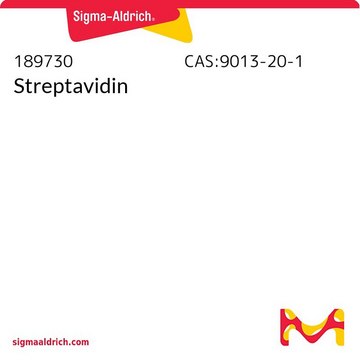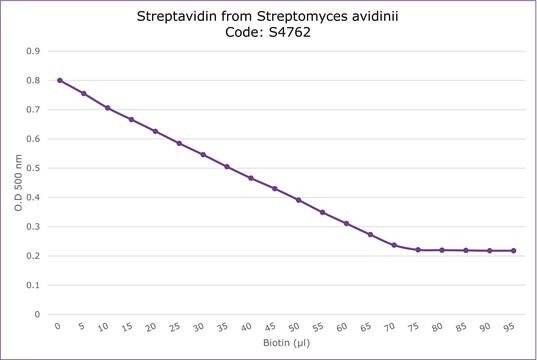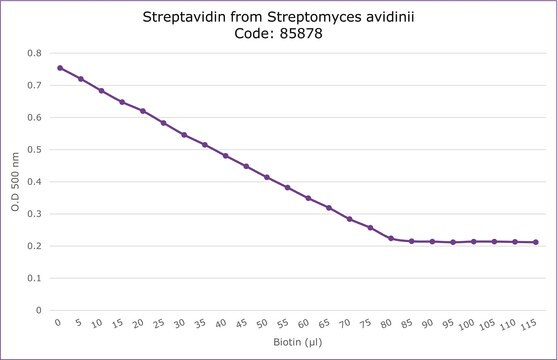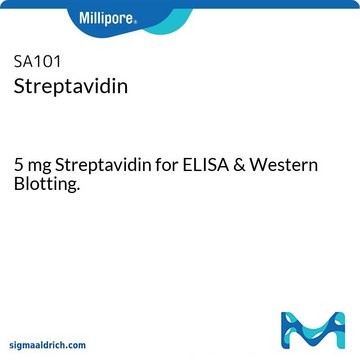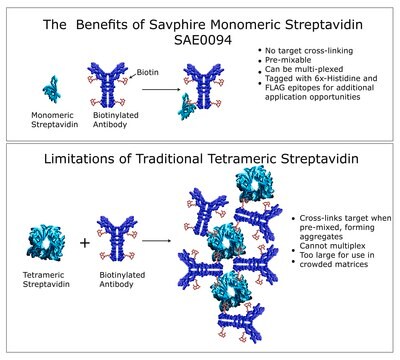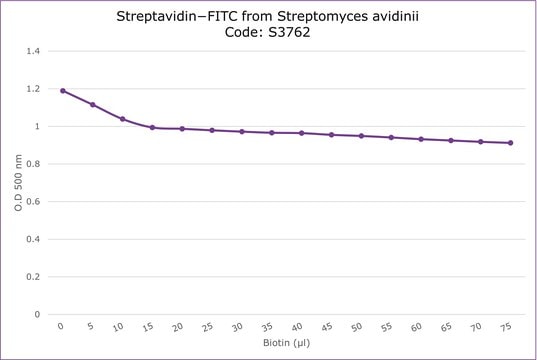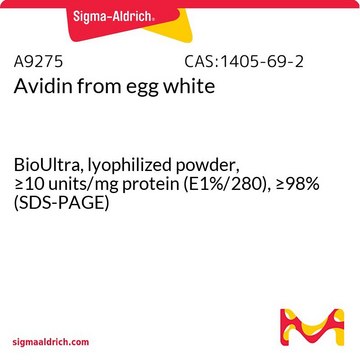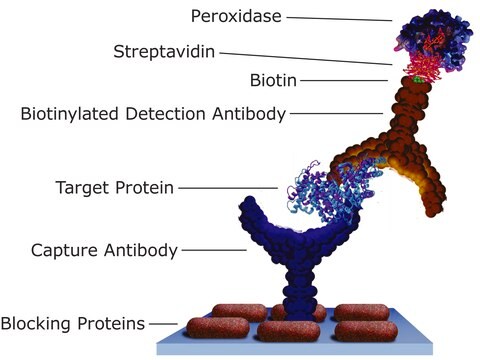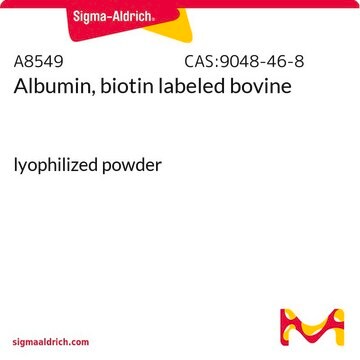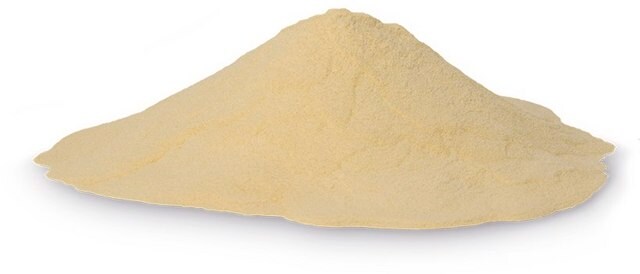S0677
Streptavidin from Streptomyces avidinii
recombinant, expressed in E. coli, lyophilized powder
Zaloguj sięWyświetlanie cen organizacyjnych i kontraktowych
About This Item
Polecane produkty
rekombinowane
expressed in E. coli
Formularz
lyophilized powder
pojemność
4 mol/mol binding capacity (Biotin)
temp. przechowywania
−20°C
Szukasz podobnych produktów? Odwiedź Przewodnik dotyczący porównywania produktów
Opis ogólny
Streptavidin is a biotin-binding protein that is obtained from Streptomyces avidinii. It is resistant to extreme temperature, pH, detergents and proteolytic enzymes. Streptavidin has a molecular weight of 60kDa and exists as a homotetramer.
Zastosowanie
Streptavidin from Streptomyces avidinii has been used-
- for blocking of the AFM (atomic force microscopy) tip, during the measurement of unbinding forces in the avidin-biotin system
- for coupling of anti-HA (hemagglutinin) antibodies during cell free synthesis and assembly of proteins on a biochip
- for the coating of the gelatin flow phantoms to eventually determine the feasibility of IVUS (intravascular ultrasound) transducer for (biotinylated) microbubble-based drug delivery
- to immobilize proteins and oligonucleotides
Działania biochem./fizjol.
Streptavidin is an antibiotic that functions by binding to and depleting the essential vitamin biotin from the surrounding environment. Because of its unique properties, streptavidin has found various applications in biological studies, including immunotherapy, immunoassays, hybridization assays, lymphocyte activation, antigen localization and affinity chromatography.
Definicja jednostki
One unit will bind 1.0 μg biotin.
Postać fizyczna
Lyophilized from 5 mM potassium phosphate buffer
Oświadczenie o zrzeczeniu się odpowiedzialności
Unless otherwise stated in our catalog or other company documentation accompanying the product(s), our products are intended for research use only and are not to be used for any other purpose, which includes but is not limited to, unauthorized commercial uses, in vitro diagnostic uses, ex vivo or in vivo therapeutic uses or any type of consumption or application to humans or animals.
Ta strona może zawierać tekst przetłumaczony maszynowo.
Kod klasy składowania
11 - Combustible Solids
Klasa zagrożenia wodnego (WGK)
WGK 3
Temperatura zapłonu (°F)
Not applicable
Temperatura zapłonu (°C)
Not applicable
Środki ochrony indywidualnej
Eyeshields, Gloves, type N95 (US)
Wybierz jedną z najnowszych wersji:
Masz już ten produkt?
Dokumenty związane z niedawno zakupionymi produktami zostały zamieszczone w Bibliotece dokumentów.
Klienci oglądali również te produkty
Cell-free protein synthesis and assembly on a biochip.
Heyman Y et al
Nature Nanotechnology, 7(6), 374-378 (2012)
Polymer Nanoparticles
Progress in Molecular Biology and Translational Science, 104 (2011)
An IVUS transducer for microbubble therapies.
Kilroy JP et al
IEEE Transactions on Ultrasonics, Ferroelectrics, and Frequency Control, 61(3), 441-449 (2014)
Identification of the Heparan Sulfate Binding Sites in the Cellular Prion Protein*
Richard G
The Journal of Biological Chemistry (2002)
Simplified Paper Format for Detecting HIV Drug Resistance in Clinical Specimens by Oligonucleotide Ligation
Nuttada Panpradist
PLoS ONE (2016)
Nasz zespół naukowców ma doświadczenie we wszystkich obszarach badań, w tym w naukach przyrodniczych, materiałoznawstwie, syntezie chemicznej, chromatografii, analityce i wielu innych dziedzinach.
Skontaktuj się z zespołem ds. pomocy technicznej